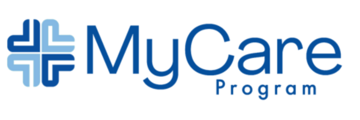Brief Overview: According to the National Institute of Diabetes and Digestive and Kidney Disease (NIDDK), “Primary sclerosing cholangitis (PSC) is a chronic liver disease in which the bile ducts inside and outside the liver become inflamed and scarred, and are eventually narrowed or blocked. When the bile ducts are narrowed or blocked, bile builds up in the liver and causes further liver damage. This damage can lead to cirrhosis and, eventually, liver failure.”
Prevalence: The prevalence of PSC is not well known. One estimate approximates the prevalence to be 1-6 per 100,000 in the US (UpToDate).
Etiology: The exact etiology of PSC is unknown. Some experts believe PSC is an autoimmune condition.
Risk Factors:
- Family history of PSC
- IBD, especially Ulcerative colitis
- Male
- Age 30-40 years old
Commonly Associated Conditions:
- Ulcerative colitis
- Cystic Fibrosis
- Cirrhosis
- Gallstones
- Autoimmune conditions
Common Medications:
- Ursodeoxycholic acid (UDCA)
- Immunosuppressants
- Anti-inflammatory agents
- Antibiotics
Common Labs, Imaging, and Tests:
- Imaging tests: MRCP, ERCP, PTC, ultrasound, CT, elastography
- Blood tests: liver function tests/liver panel, antimitochondrial antibody, IgG4 level
Common Symptoms:
- Commonly asymptomatic at time of diagnosis
- Fatigue
- Pruritus (itching)
- Fever, chills, night sweats
- Abdominal pain (RUQ)
Common Treatments:
- Medications (see above). According to UpToDate, “Unfortunately, no medication has been conclusively proven to alter the natural history of this disorder.”
- Endoscopic therapy may be indicated
- Surgical intervention may be indicated (biliary reconstruction, proctocolectomy, liver transplant)
- Treatment/management of any associated conditions
- Cancer screening – gallbladder carcinoma, cholangiocarcinoma, colon cancer, and hepatocellular carcinoma
- DEXA scan to screen for osteoporosis
Physical Findings:
- Commonly normal physical exam
- Excoriations can be present from pruritus
- Jaundice
- Hepatomegaly, splenomegaly
Potential Complications and Contraindications:
- Can progress to end-stage liver disease, liver failure
- Portal hypertension
- Cholestasis, cholangitis and cholelithiasis
- Vitamin deficiencies (particularly Vitamins A, D, E, K)
- Metabolic bone disease – particularly osteoporosis
- Gallbladder cancer
- Hepatocelular carcinoma
- Colon cancer
- Cholangiocarcinoma
- Dominant biliary strictures
- Steatorrhea
- Progressive hepatic fibrosis and cirrhosis
General Health and Lifestyle Guidance:
- Screening for osteoporosis is recommended. Talk to your healthcare provider if this has not been done yet.
- Take all treatment and supplements as directed by your healthcare provider
- Work with your healthcare provider and/or dietician to determine what dietary modifications are needed
- Reduce/avoid alcohol intake
- Ask your healthcare provider if you need to avoid raw or undercooked shellfish, meat, and unpasteurized milk
Suggested Questions to Ask Patients:
- Have you noticed changes in your skin or eyes (e.g., yellowing or itching)?
- Do you have a history of ulcerative colitis or Crohn’s disease?
- Are you experiencing fatigue or weight loss?
- Have you had any episodes of fever, chills, or right-sided abdominal pain?
- Are you currently seeing a liver specialist?
Suggested Talking Points:
- Make sure to follow up with your healthcare provider as directed and complete all ordered lab tests, imaging, etc.
- You may be followed by multiple providers/specialists for this condition
- Make sure to report any new, persisting, or worsening symptoms to your healthcare provider(s)
- Support system – family, friends, spiritual/religious, support groups, counseling/therapy, etc.
Sources:
